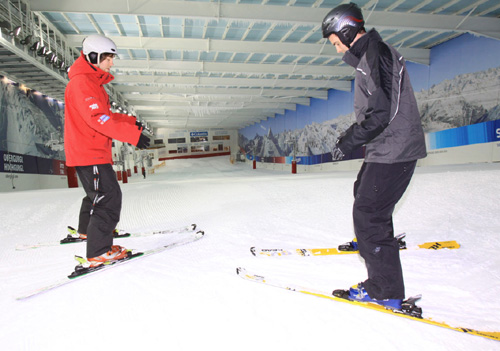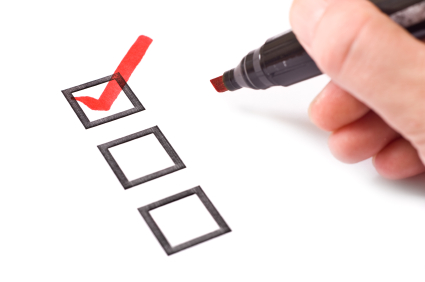In previous posts, I have discussed how to carry your skis when walking and how to put your skis on. As I have explained before, this information is useful for first time skiers to have an understanding of what will happen, but is not designed as a manual and should be in conjunction with ski lessons from a qualified instructor.
You have now put on your skis. The first sensation that you experience is the feeling of being clamped into the ski bindings and unable to get out. This is normal, and it’s crucial at this stage to become familiar with this new sensation before attempting to descend downhill.
Your instructor should have found a suitable flat area for you to start on. If you have not already done a warm up routine then it is essential, that you start one now, before any other activity takes place. Typical exercises that might be performed at this stage include, sliding the skis backwards and forward whilst in a stationary position, walking on the spot by lifting one ski and then the other, jumping up and down, bending down to touch your ski boots, turning around in a circle and walking sideways in both directions. All of these exercises help you to get a feel for the skis sliding around on the snow.
After you are comfortable with this then you can start to walk around on your skis. Sliding one ski and then the other or lifting one ski and then the other. Walking forward and then walking backwards. Try pushing yourself along with your ski poles, turning around and coming back again. This is all giving you confidence on the skis and improving your balance.
Often for children, the instructor will introduce a more fun aspect to this and use games as a way of teaching the group. For example, throwing and catching something whilst walking along, ducking underneath an obstacle, pretending to be various animals. Maybe, depending on the instructor, they might do this for adults too.
The idea is to build confidence and familiarity with the skis and the snow. This provides a foundation for the next stage which is to start sliding down on a gentle gradient. Most ski areas have designated nursery slopes for beginners and you will notice there are ski lifts designed to take you uphill. When you first start off it is likely that you will have to walk up a short distance before graduating onto your first ski lift. The easiest way to do this is to walk sideways up the slope. This enables you to walk up without immediately sliding back down the hill again. This is because the skis are designed to travel forwards and they have sharp metal edges on the sides which are designed to grip into the snow. This is generally known as sidestepping.
Sidestepping is something which needs practice to get right. The first thing to remember is to have your skis absolutely at right angles to the slope. This prevents either sliding forwards or backwards. Then, to enable the skis to grip in the snow, the edges have to be set in a particular way. The ski closest to the bottom of the slope (referred to as the downhill ski) must use the edge on the ‘inside’ to grip into the snow. The ski closest to the top of the slope (referred to as the uphill ski) must use the edge on the ‘outside’ to grip into the snow. This creates an angle of the ski on the snow so that the ski is never ‘flat’ against the slope. If the ski is flat against the slope you will slide down sideways. Once you have understanding of where the edges should be set, you can start walking up. Take your time and never rush, take one step up the hill and then bring the lower ski up next to the top ski. Continue walking up the slope in this way. If you are sliding down then check that the skis edges are suitably gripping the snow. Your ski poles can be used as an aid although be careful not to trip over them.
Hopefully, your instructor knows a small slope that levels off at the top so that you can turn and walk around before skiing down. If this is not the case then walk up a maximum of 6 steps before attempting to ski down. It is important to remember to find a slope which ends with an ‘uphill’ section so that you will come to a natural stop.
In my next post, I will discuss how to prepare to ski down the slope, explain the basic posture required and some exercises on improving balance and co-ordination. You will also take the first steps in being able to control your speed.






